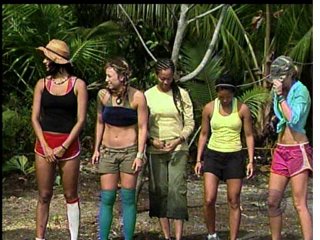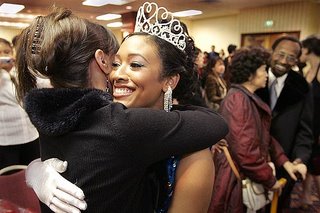A Topic I've Been Avoiding...

I don't mind talking about my life or about my family or even my views on things. But I have been
very reluctant to blog about my own pain. I don't mean emotional pain. That's private and I share that in my own way. Physical pain, however, is much more difficult to discuss. I suppose part of that is an instinctive "guy thing" -- not wanting to seem like a "whiner" or someone who can't handle "a little pain." I also do not like pity nor do I want it. And yet, I do have pain and/or discomfort, sometimes a lot of pain, every day.
Why? Well, I'm not entirely sure. I can give you a little bit of medical history on me. When I was 11, I was diagnosed with
familial polyposis. Here's the textbook definition from
WebMD:
Familial adenomatous polyposis is a group of rare inherited disorders of the gastrointestinal system. Initially it is characterized by benign growths (adenomatous polyps) in the mucous lining of the gastrointestinal tract. Symptoms may include diarrhea, bleeding from the end portion of the large intestine (rectum), fatigue, abdominal pain, and weight loss. If left untreated, affected individuals usually develop cancer of the colon and/or rectum. Familial adenomatous polyposis is inherited as an autosomal dominant trait.
For those of you who may be thinking "thanks for sharing, Allen," my apologies. Facts are facts. Fortunately, I did not have the worst of those symptoms but it was detected nonetheless. On my dad's side of the family, the males have a history of colon cancer. My grandfather died of it when my dad was 2 and my father passed away from his second bout with cancer at the age of 56. After I was diagnosed with polyps, I had a bunch of examinations (*shudders at the memories*) and they determined that I was at high risk for later developing colon cancer. My father, who by this point, was an expert on the conditions, treatments, etc. presented me with what he felt was the best choice: new and fairly radical surgery.
The doctors would do a two-part operation on me (keep in mind, I was 12 at this time). In the first operation, they would remove my large intestine (which includes the colon) and set me up with a temporary
colostomy. I would then heal for six weeks (a very slow six weeks). Then I went in for the second operation, where they reconnected me internally with what I call a "bionic intestine," a plastic replacement that they somehow made work perfectly. All I needed was a couple of over-the-counter (OTC) medications to regulate my metabolism. It took me six more weeks to recover from the second operation but medically, it went flawlessly.
Emotionally, I was a very traumatized puppy after the Summer of Operations and Recovery. I guess that's understandable, considering it was the summer before high school and I'd never had that kind of major surgery before nor long, sometimes agonizing recoveries. (Is it any wonder I did pot my freshman year?) I refused to speak about either the condition, the operations or the recovery...for the next five years. Period. No exceptions.
Still, the surgeries did their job. I had absolutely no complications from the surgery for almost exactly 20 years (the surgeries took place in 1983). In the Fall of 2003, I started getting sick and I had no idea why. It took until March for me to learn that I was
lactose intolerant. I learned that both my sister and my mother have that condition, so clearly I inherited it, too. And my sister did not develop it until she was an adult, too (which is both weird and interesting). About a week or two after I cut out dairy products, I started feeling a good deal better.
But I started developing other symptoms over the next couple of years that weren't quite so easily explained or dealt with. I would have stomach discomfort and pain and I didn't know why. And since I was only working temp jobs and didn't have any benefits, seeing the doctor was cost-prohibitive, especially since my wife was not working yet. It was never severe enough to go to the hospital and I only missed maybe a couple of days of work in a 2 year period.
Fortunately, my current job went permanent in December and benefits kicked in on January 1 of this year, so I started seeing a doctor and he got me in touch with a wonderful gastrointologist. I had to go through a new series of tests and x-rays and finally, an out-patient surgical endoscopy a few months ago. What they were able to determine is that I have benign polyps in the small intestine and stomach, which the doctor said was fairly common with people who have had polyps in the large intestine.
I'm not sure which was more difficult for me, the relative reminiscence of "surgery" (even though it was exploratory and not 'cutting' surgery) or the news that I had more polyps (albeit benign and much less aggressive than the ones that had been in my large intestine). I took a breather from seeing the doctor for a few months. Admittedly, that probably wasn't wise but psychologically, it was necessary for me.
Nevertheless, my symptoms have continued and in some ways, gotten dramatically worse at times, so I can't get in denial about this. I've set up a new appointment with the gastrointologist to see what our next steps are in dealing with this. I still don't understand what tiny polyps have to do with the symptoms I've experienced, since the doctor confirmed they are not cancerous or even pre-cancerous. Or if it's somehow related to the lactose intolerance-? I don't know.
Anyway, why am I finally sharing this with you -- the blogosphere? Good question. Well, first of all, I know I'm not the first person who's ever experienced this and I certainly won't be the last. I also know that I'm not the only person dealing with bodily pain on a regular basis. I also want it publicly known that this does not diminish my quality of life. I still work full time and I haven't missed one day for being sick since I went permanent. I still volunteer run
ISAA. I'm in
First Light. I am active with my family (and we have a great time) as often as possible. I enjoy my life.
But I'm not Superman. I've had to accept that I can't do some things like I used to. I have to allow myself to slow down and take it easy, not push myself as much as I used to (and had grown accustomed to).
It's taken a lot of support. There are times when prayer is all that gets me through. I'm deeply grateful for the daily support of my wife, my kids and my friends who know what I've been going through. It means the world to me. I've learned that pain tends to isolate you. I can see why people get depressed or even angry about it, although I haven't felt either of those emotions about it. I do get frustrated sometimes and confused about the cause, what it really means (which I still don't know). But I know that pain does not control my life, I don't give it that control. I'm just making it day to day, as best I can.
Thanks for listening.
Best Wishes,
Allen






























